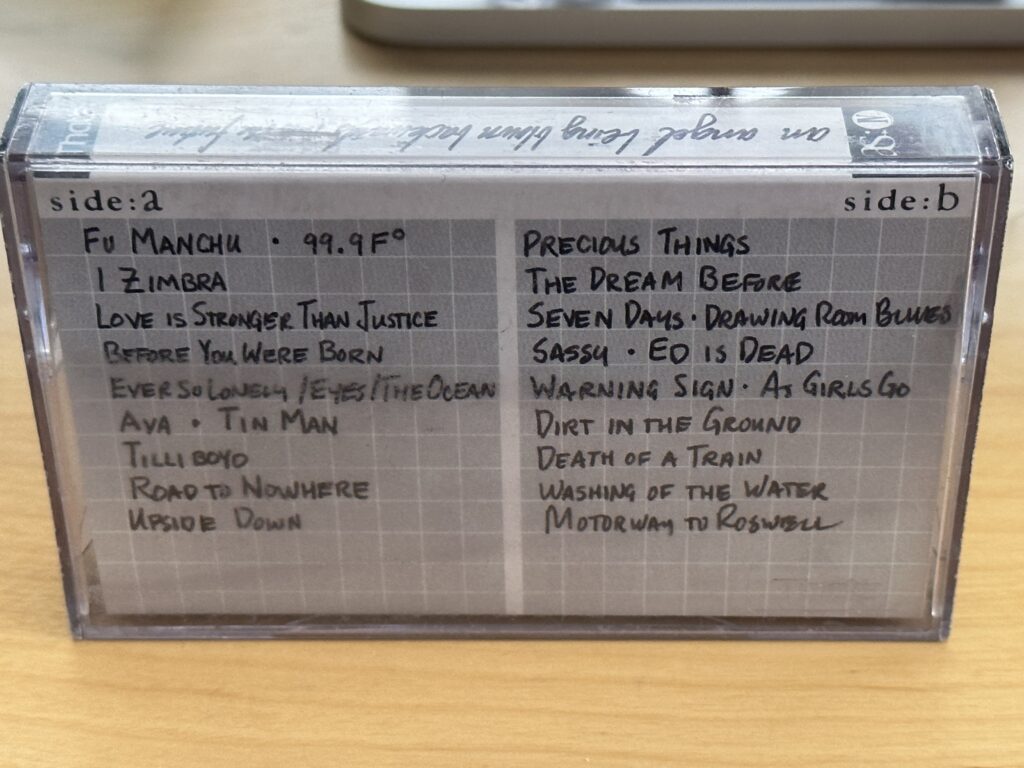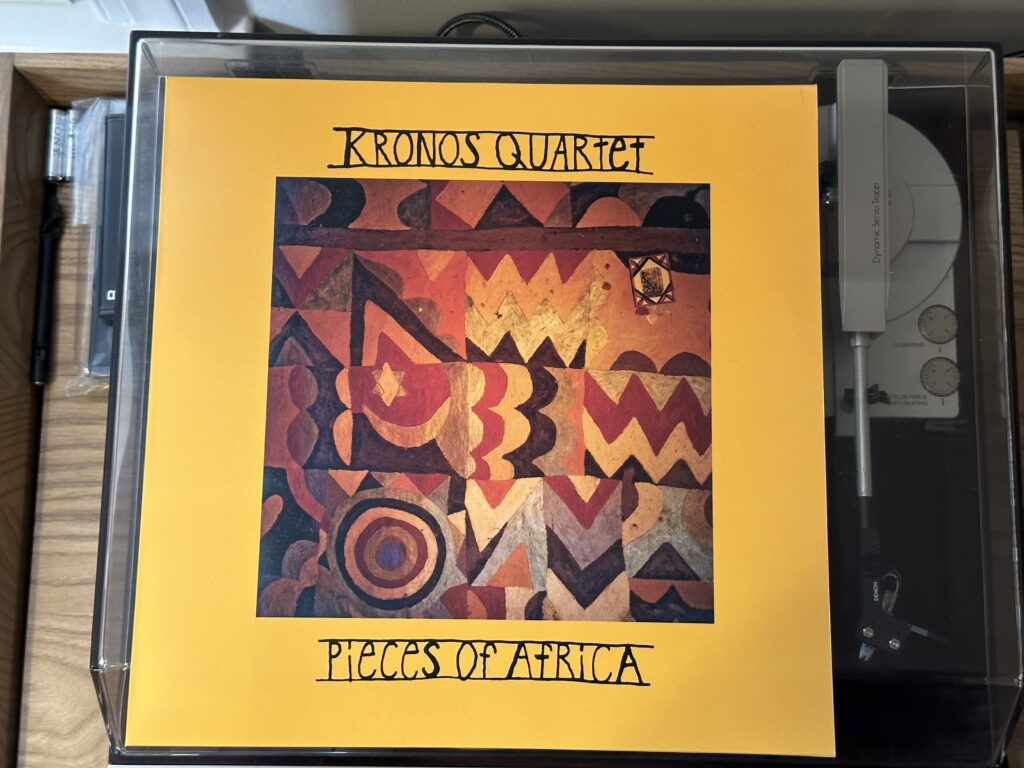
Prodded by yesterday’s post about Pieces of Africa and the mixes it inspired, I was inspired to post about a few of them. These were mix tapes—made well before the advent of Rip.Mix.Burn—and they reflected whatever was going through my brain at the time.
This mix was made early in the summer of 1993. I had just finished my third year at the University of Virginia and was interning in a physics lab, and slowly coming to the painful conclusion that I would not be going on to graduate study in my field. But it was sunny, and I was reasonably happy! So this was made to play in my car with the top down.
Like so many of the mixes I made (and still make), this was a way for me to digest all the CDs I had bought and listened to, whether from Plan 9 or in the BMG music club, which sold classical and other CDs at a substantial discount if you didn’t mind the occasionally blurry reproductions of album art and liner notes they suspiciously sported…
But summer of 1993 was still a pretty good time. Frank Black had just changed his name and released his first solo album; Sting’s latest showed he still had songwriting chops. I had met a singer from a woman’s chorus on a Glee Club tour who moved me deeply, to the tune of a Suzanne Vega song. Peter Gabriel’s Real World was still introducing me to new voices like Sheila Chandra. My friends in the New Dominions had just recorded their first CD, for which I did the jacket and disc design, working around a brilliant illustration by Deepak Raghu. I had heard Tori Amos for the first time in concert at Old Cabell Hall, being lucky enough to score tickets after a Glee Club rehearsal. I was starting to explore jazz beyond Coltrane and Miles and Wynton and Branford. Good times indeed.
- Fu Manchu – Frank Black (Frank Black)
- 99.9 F° – Suzanne Vega (99.9 F°)
- Love Is Stronger Than Justice (The Munificent Seven) – Sting (Ten Summoner’s Tales)
- Before You Were Born – Toad the Wet Sprocket (Fear)
- Ever So Lonely/Eyes/The Ocean – Sheila Chandra (Weaving My Ancestors’ Voices)
- Ava – David Byrne (The Forest)
- Tin Man – New Dominions (Salamander!)
- Tilliboyo – Kronos Quartet (Pieces of Africa)
- Road To Nowhere – Talking Heads (Sand In The Vaseline Popular Favorites 1976-1992)
- Precious Things – Tori Amos (Little Earthquakes)
- The Dream Before – Laurie Anderson (Strange Angels)
- Seven Days – Sting (Ten Summoner’s Tales)
- Drawing Room Blues – Joe Henderson (Lush Life – The Music of Billy Strayhorn)
- Sassy – Neneh Cherry (Homebrew)
- Ed Is Dead – The Pixies (Come On Pilgrim)
- Warning Sign – Talking Heads (More Songs About Buildings And Food)
- As Girls Go – Suzanne Vega (99.9 F°)
- Dirt In The Ground – Tom Waits (Bone Machine)
- Death Of A Train – Daniel Lanois (For The Beauty Of Wynona)
- Washing Of The Water – Peter Gabriel (Us)
- Motorway To Roswell – The Pixies (Trompe Le Monde)
If you have Apple Music, you can listen to the mix here, though it doesn’t include all the tracks… 🙁
Errata: Although “Upside Down” is in the track listing on the j-card for the tape, it wouldn’t fit on the end of Side 1. So I saved it for another mix.
Also noting: I added a page to the blog to track all the articles about mixes.

